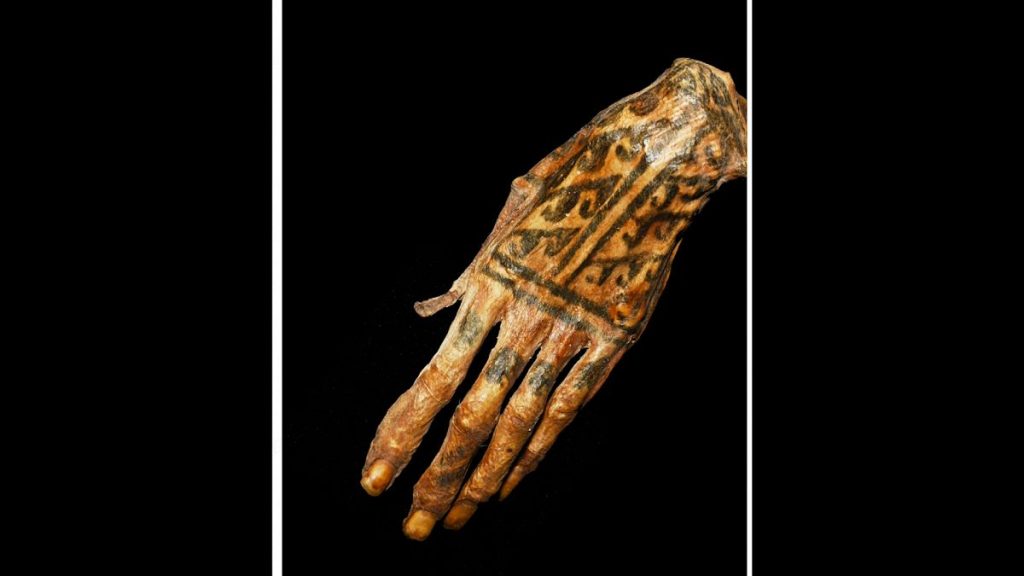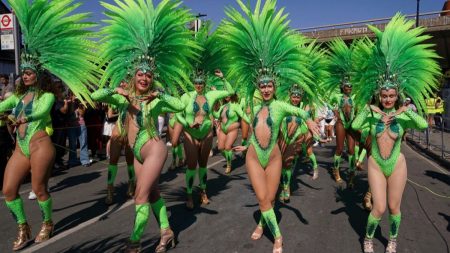The intricate world of ancient body art has been brought to light through a groundbreaking study utilizing laser technology to reveal hidden tattoos on Peruvian mummies. Researchers employed laser-stimulated fluorescence to uncover designs invisible to the naked eye, offering a unique window into the cultural practices and artistic expressions of the Chancay civilization, a pre-Inca culture that thrived along the Peruvian coast around 1250 A.D. This discovery pushes the boundaries of our understanding of ancient tattooing practices and provides valuable insights into the lives and beliefs of these individuals.
The research focused on approximately 100 mummies from the Chancay culture, all of whom exhibited some form of tattooing on various body parts, including the back of the hands, knuckles, and forearms. Among these, four individuals stood out with exceptionally intricate tattoos featuring geometric patterns such as triangles and diamonds. These designs, previously obscured by time and the mummification process, were revealed through the innovative application of laser technology. The laser-stimulated fluorescence technique allowed researchers to penetrate the surface layers of the mummified skin, revealing the pristine original tattoo designs beneath.
The laser imaging technique effectively bypasses the superficial layers of the mummified skin, which often appear crude and unsophisticated to the naked eye. By illuminating deeper layers of the skin, the laser reveals the original tattoo in its near-pristine state, showcasing the intricate artistry and sophistication of the designs. This method offers a remarkable glimpse into the past, providing a clearer picture of the tattoos as they would have appeared when freshly applied. The clarity achieved through this technique highlights the advanced tattooing practices of the Chancay people, exceeding previous expectations of their artistic capabilities.
The discovery of these intricate tattoos adds another layer to our understanding of the Chancay culture, providing valuable insights into their artistic traditions, social structures, and possibly even their belief systems. Tattoos often hold symbolic meaning, reflecting cultural identity, social status, or spiritual beliefs. The geometric patterns found on the Chancay mummies could potentially represent specific meanings within their culture, providing clues about their worldview and societal organization.
This research joins a growing body of evidence demonstrating the widespread practice of tattooing in ancient cultures. While the oldest known tattoos were found on the remains of a Neolithic man from the Italian Alps dating back to around 3,000 BC, evidence of tattooing has also been found on mummies from ancient Egypt and various other cultures worldwide. The Peruvian mummies add to this rich tapestry of ancient body art, showcasing the universality of this practice across diverse cultures and time periods.
The study of ancient tattoos provides a unique and intimate connection to the past, offering a glimpse into the lives and expressions of individuals who lived centuries ago. These permanent markings on the body served as a form of personal expression, cultural identification, and possibly even spiritual significance. By utilizing advanced technologies like laser-stimulated fluorescence, researchers are able to uncover and preserve these intricate designs, further enriching our understanding of ancient cultures and their artistic traditions. The continued development and application of these technologies promise to reveal even more hidden treasures from the past, expanding our knowledge of human history and cultural practices.














